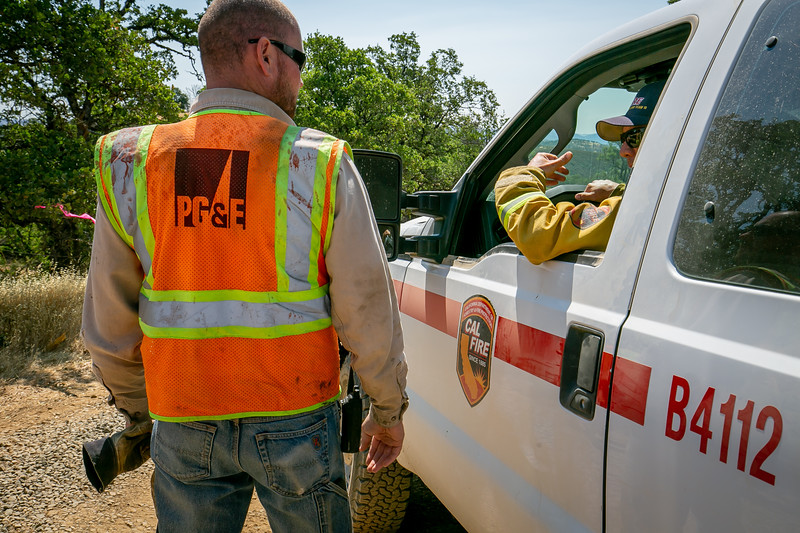Thanks to climate change, California’s fire season – which used to begin at the very end of summer or early fall – is now longer and more destructive than ever.
For a prime example of this new normal, look no further than the Pawnee fire, which tore through 15,000 acres in Lake County in late June, two full months before fire season traditionally starts.
The exceedingly dry, hot and windy conditions made containment of the blaze challenging, and the IBEW 1245 crews from PG&E who were called up to do the restoration were actually turned away by the fire department when the blaze kicked back up again after an initial period of containment.
The four crews were finally able to get in on July 3, and immediately went to work building a back-tie to restore power to about a dozen customers. The steep, rough terrain and lack of passable roadways made access a huge challenge, and the crews has to rely on helicopters to fly in all of the poles and wires. Some areas were entirely inaccessible to trucks, and the crews had to utilize ATVs to transport themselves and their equipment over a small, rugged road built specially for them.
The crews worked all the way through the scorching hot Fourth of July holiday – but managed to finish up the job by nightfall, just in time to return to town and watch the fireworks with their families.

Frank Hanlon checks in with Cal Fire

Lucas Ramirez (left) and Tyler Somers set a pole


Tyler Somers holds a guy guard to line up a pole


Casey Prine works in a bucket

From left: Brandon Davis, Lucas Ramirez, Gabe Lozano, and Frank Hanlon

Damien Byrd guildes the helicopter from the ground
Photos by John Storey